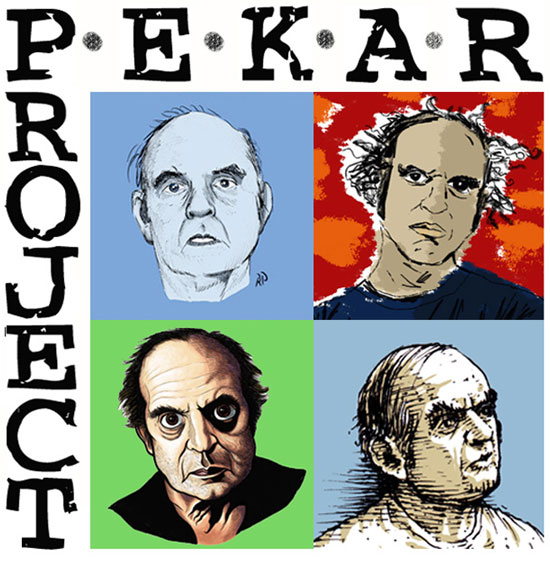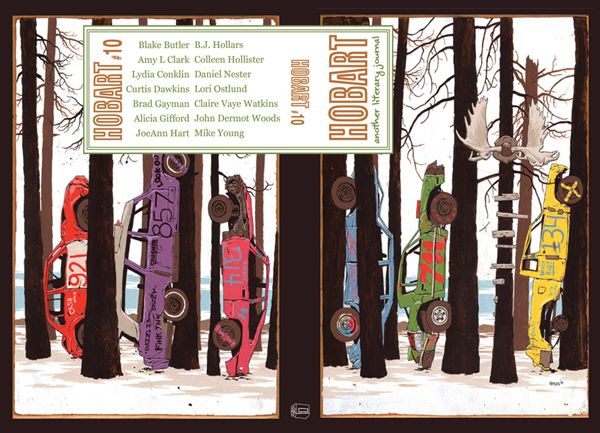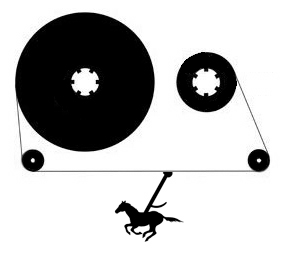 The Digest took a week off and a lot happened, beginning here. Since Fictionaut went public last week, lit mags have invaded en masse the groups section of the site, joining the many magazines already established there. A few recent additions: NOÖ Journal, Barrelhouse, Flatmancrooked, Storyglossia, Gigantic, The Southeast Review, Short Fiction, Bull: Fiction for Thinking Men, Staccato, Prarie Schooner, and Bartelby Snopes. And on the blog, editor Ben White takes a moment to talk about Nanoism and Fictionaut groups.
The Digest took a week off and a lot happened, beginning here. Since Fictionaut went public last week, lit mags have invaded en masse the groups section of the site, joining the many magazines already established there. A few recent additions: NOÖ Journal, Barrelhouse, Flatmancrooked, Storyglossia, Gigantic, The Southeast Review, Short Fiction, Bull: Fiction for Thinking Men, Staccato, Prarie Schooner, and Bartelby Snopes. And on the blog, editor Ben White takes a moment to talk about Nanoism and Fictionaut groups.
And just when things couldn’t get any more self-referential here, I can’t help plugging PANK associate editor Roxane Gay‘s commentary on race and literary publishing over at Luna Park, “I Don’t Know How to Write About Race.” From the piece:
Talking about race is not a call for liberal guilt or apologia. To say that people of color are underrepresented in publishing, independent or mainstream, is not an accusation to any person or entity. It is a fact. People of color are underrepresented almost everywhere. Encouraging a conversation about ways in which we might increase that representation within the independent publishing community does not necessitate somehow taking responsibility for the deficit.
 SMITH Magazine has launched The Pekar Project. Harvey Pekar of American Splendor fame has teamed up with artists Tara Seibel, Joseph Remnant, Rick Parker, and Sean Pryor in an ongoing webcomic series for the magazine. Updated every other week.
SMITH Magazine has launched The Pekar Project. Harvey Pekar of American Splendor fame has teamed up with artists Tara Seibel, Joseph Remnant, Rick Parker, and Sean Pryor in an ongoing webcomic series for the magazine. Updated every other week.
Hadn’t heard of Things Magazine, but their recent post is full of interesting things, such as Museum of the Phantom City.
And they mention this: MagCloud. Possibly the easiest way to start your own lit mag?
Interesting polemic on the lit blog Bookish Us: “Why Don’t Aspiring Writers Read More Literary Magazines.”
According to Wired, “iPhone Scarab Reinvents the Literary Journal.” Sounds like a far-fetched claim—especially with magazines like Electric Literature out there and established magazines like McSweeney’s with their own apps already—but certainly worth the look.
A literary magazine dust-up down under.
 Check out Hobart 10. The cover (at right) is probably worth the price alone.
Check out Hobart 10. The cover (at right) is probably worth the price alone.
The Rumpus summarizes the recent news of 50-year-old print journal TriQuarterly‘s name being handed over by Northwestern University to graduate writing students in order for them to create a new online literary magazine with it. This news about TriQuarterly has been the talk of the blogosphere the past weeks. What’s more The Rumpus asks, if you care, say something:
The how: the president of Northwestern is Morton Shapiro, and he can be reached at nu-president@northwestern.edu.
The why: in short, TriQuarterly is an excellent and groundbreaking literary magazine, founded in 1958, that was the first to discover writers ranging from Amy Hempel (by publishing her heartstopping and oft-anthologized story, “In the Cemetery Where Al Jolson Is Buried”) to, more recently, Aleksander Hemon. As per an email sent out by TriQuarterly’s associate editor, Ian Morris, the decision was made by the university — and handed down to the review’s editors — only hours before a press release went out.
And: Have you always wanted to write for The Rumpus?
 The mixtape for Carousel‘s latest issue is up, live, and free.
The mixtape for Carousel‘s latest issue is up, live, and free.
Finally, a bit about the salad days of lit mag publishing from The Paris Review founding editor George Plimpton’s last interview before he passed away in 2003:
No, but I got into trouble with Congress. I published an anthology called “The American Literary Anthology” – the best work published from small publications, a little bit like the Pushcart Press. It was the best of the quarterlies. Among other works, it included a one word poem by Aram Soroyan, a calligraphic poem. The one word was “lightht.” His idea was that if you put it on the page in a certain way, it would give the impression of light. For this the author, Soroyan, was paid $500 and the magazine in which it had appeared, The Chicago Review, got paid $750 of the taxpayer’s money. You can imagine what a stir it caused. I was called down to try and explain this. Imagine trying to explain calligraphic poetry to a bunch of Congressmen sitting angrily at one end of the table. The National Endowment for the Arts really thought it was in terrible trouble because of this. There was also a piece by Ed Sanders, who was the Fugs poet, describing a jar of cold cream that Allen Ginsberg used to lubricate Peter Olovsky. You can imagine what a stir that caused.
Every Tuesday, Travis Kurowski presents Luna Digest, a selection of news from the world of literary magazines. Travis is the editor of Luna Park, a magazine founded on the idea that journals are as deserving of critical attention as other artistic works.
-
1
Trackback on Oct 21st, 2009 at 12:41 pm
Source of Lit – Rediscovered Reading – Dawn Raffel!…
Over at the Fictionaut blog, Matt Briggs fine series, Rediscovered Reading, takes a look back at Dawn Raffel’s first book. Her story collection, In the Year of Long Division, was published by Knopf back in 1995, and it has the same traits that makes…
Oct 6th, 2009 at 8:35 am
Great digest and greater tip of the hat to Roxane Gay. That article needs to be read.
Oct 7th, 2009 at 4:02 pm
Travis, Thanks much for the tip about writing for the Rumpus.